Facts of the Silk Road in China: Past, Present and Future
Throughout history, mankind has always moved around in search of trade and goods exchange, a practice that dates back into prehistory. Eurasia has been crisscrossed with ancient trade routes for more than 3,000 years, stretching from western Europe to the Baltic sea, and from the center of the Greek Empire as far south as central Africa.
Over the centuries, these routes began to coincide with the central and south Asian trade routes that linked China with Indonesia, Japan, Tibet, Mongolia, and India. As they linked up, the routes for trade in each area of the known world became the main trade routes for the transport of silk and spices, popular with the emerging Roman Empire, from China and India to the shores of southern Europe. Today, these linked trade routes have become known as the ancient Silk Road, and were the main routes for trade by both land and sea.
What Is the Ancient Silk Road?
An ancient network of trade routes from China to the Mediterranean Sea, the Silk Road was the main route for the transport of silk and spices between Asia and the Roman Empire. Since the Han Dynasty in China, the Silk Road was the overland and marine trade routes that ran between China and Java, India, Persia, Somalia, Arabia, Egypt, and Europe. Yet, while it is widely known today as the Silk Road, it was not given that name until the late 19th century.

Acient silk road was an important trade route in the past
The route was first opened up by the Han Dynasty, somewhere between 139 BC and 129 BC, by Zhang Qian, who set out on an amazing journey across entire continents to forge new trade and cultural relations with other races. And for more than 1,500 years, this was the main route for trade along its entire 8,000-kilometer length. It was this trade route that finally linked the different cultures of the ancient world together, and began around 2,000 years of historical cultural exchanges that has changed the world.
The name was derived from the main product of the trade route from Xi’an in China (formerly Chang’an and the start of the ancient trade route) to Rome, which was silk, a commodity prized by the nobility of the Roman Empire at the time. The route was expanded during the Han Dynasty to include the island of Java, as well as Somalia in West Africa, and the coastal regions along the Persian-Indian border.
Now, you can join the silk road tour from the beginning city - Xi'an to enjoy this ancient trade route
The Silk Road was even the reason for the building of the extension of the Great Wall of China, which was used to protect the trade route from thieves and bandits from the northern tribes. Trade played a huge part in the development of whole civilizations, and opened up political and economic relations between trade partners that were half a world apart.
While silk may have been the main reason for the trade routes, this huge network of transport routes also carried many other goods in return, and was responsible for the expansion of religions and technologies along the entire route. However, it was also the main carrier of disease, most especially the notable Bubonic Plague, which traveled into Asia from Europe along the maritime Silk Road, carried on the ships by rats.
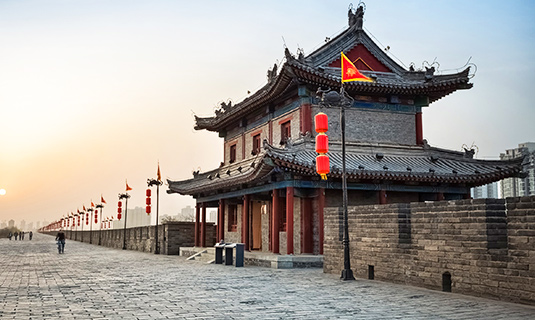
Xi'an City, the beginning of land silk route
And while the land route ran from Xi’an to Europe, crossing the vast mountainous regions to the north and west of China, the maritime route took the silk via a different route to Rome. From the shores of southern China, the ships sailed out, expanding the network of trade routes around the end of the Malay Peninsula and up to Burma, and landing in India and Sri Lanka. As the maritime routes headed west, they included the ancient sea ports of Persia and Arabia, and headed up into the area of the Nile Delta, in Egypt.
Other routes traded south and east, heading to the islands of Indonesia, stopping in Java and Sumatra, where they picked up spices and herbs. From the ports of Arabia, the routes also headed south, to Somalia and the East African nations, stopping at the sea ports of Mogadishu, Mombasa, and Dar es Salaam.
In Egypt, the maritime trade routes stopped temporarily, and goods were transported overland into the Mediterranean Sea, where they would be picked up by Phoenician traders and delivered to Turkey, Greece, and Italy. From those European countries, skins, furs, cattle, and even slaves were traded in return for the goods from Asia, Africa, and the Middle East.
These ancient traders were also responsible for the intersecting of the many cultures that lay along the Silk Road, bringing aspects of the different peoples into the areas of their trade, exchanging traditions and cultural habits as well as silk and spices.
The routes that make up the Silk Road, in the different areas of Central Eurasia, Persia, and southeast Europe, had been present for thousands of years prior to the opening of the Silk Road as a major trade route along its entire length, with the oldest being thought to date back to around 2,000 BC, between the ancient people of what is now Xinjiang province and mainland China.
The Present Silk Road Travel Route in China
The ancient Silk Road’s use died out in around the 14th century AD, after the fall of the Mongol Empire fragmented the economic, cultural, and political unity of the trade route. Around the same time, the Byzantine Empire began to decay, with many of the rival warlords in the Middle East grabbing huge swathes of land as the empire declined.
As the empires fell, smaller nations crystalized out of the ashes, and these regional states were the cause of the decline of the nomadic powers in central Asia and the Middle East, further reducing the usefulness of the world’s longest single trade route. There was some revival of the silk trade with China in the late 17th century, though this did not last long, and by the 1720s it had collapsed along with the Safavid Empire.
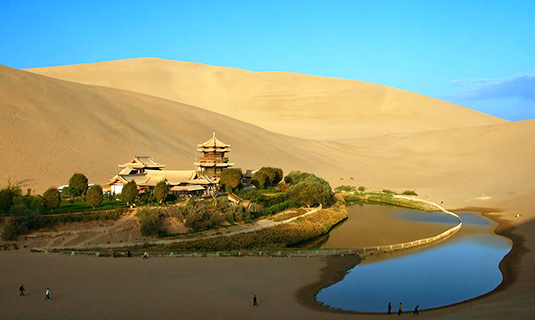
Acient silk road is gradually becoming hot tourist route
Now, the ancient Silk Road has a new and more modern use. As well as being part of the One Belt, One Road initiative, which plans to bring a new “Silk Road” into being from China to Europe for modern trade, the Silk Road is one of the most popular touring routes in China, and travel for tourists along the central Asian sections of the ancient Silk Road is a journey of discovery, both inside and out.
In China, the Silk Road passes through the provinces of Shaanxi, Gansu, and Qinghai, as well as through Ningxia Hui and Xinjiang Uygur Autonomous Regions, and there are hundreds of places of interest along the route. Some of the historical sites and scenic spots along the route include the Kashgar Old Town, the Idgar mosque, and the AbakhKhoja Tomb, as well as the Turpan Basin, the Yangguan Pass, and the Mogao grottoes of Dunhuang.
These China Silk Road tours, which take you in the tracks of ancient Chinese traders from 3,000 years ago, follow the ancient trade routes that were opened up, bringing you to the ancient cities of the trade routes. Follow in the footsteps of the Venetian explorer, Marco Polo, who traveled the ancient Silk Road in the 13th century, and whose documented tales informed the Europeans of the wealth and massive size of China and its ancient and mystical culture.
Future Development of Silk Road Travel Route
In China, the “One Belt, One Road” initiative is the continuation and further development of what has become the spirit of the ancient Silk Road, and in an era dominated by ideas of peace and cooperation, it is hoped that the Silk Road can become a symbol of peace and unity in a complex international landscape.
The travel route is expected to be developed, with tourism being a prime concern for the future of the routes. The United Nations World Tourism Organization has agreed that tourism can contribute greatly to cultural conservation, and an increase in tourism along the Silk Road can lead to better conservation of the ancient buildings and sites that lie along its route. Countries all along the ancient route are increasingly aware of the benefits of tourism on their economy and culture, and with an increase in tourism along the Silk Road, some of the areas of northern China will be more open to foreign visitors than ever before, with more tourists heading to the north to visit the improved Silk Road tour routes.
Related Articles and Posts
No documents found.
Related Trips
-
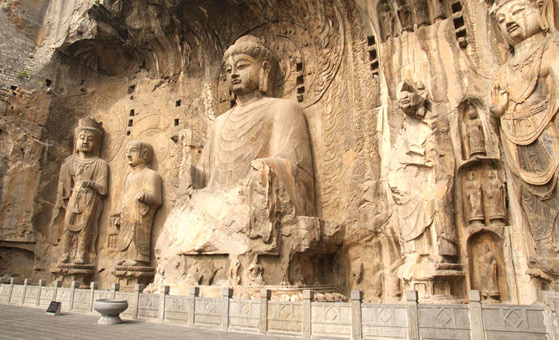 4-Day Jiayuguan Pass and Dunhuang Silk Road Short BreakView Details
4-Day Jiayuguan Pass and Dunhuang Silk Road Short BreakView DetailsJiayuguan - Dunhuang
-
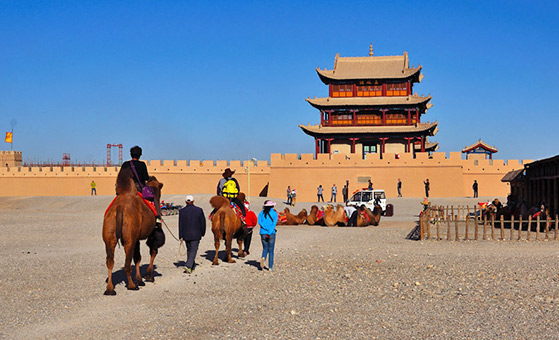 8-Day Lanzhou Xiahe Jiayuguan Dunhuang Silk Road TourView Details
8-Day Lanzhou Xiahe Jiayuguan Dunhuang Silk Road TourView DetailsLanzhou - Xiahe - Lanzhou - on the train - Jiayuguan - Dunhuang
-
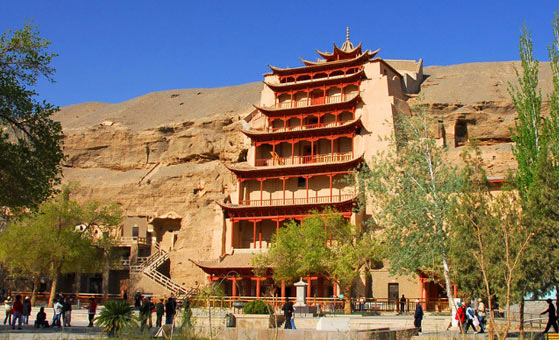 10-Day Highlights of the China Silk Road TourView Details
10-Day Highlights of the China Silk Road TourView DetailsDunhuang - on the train - Turpan - Urumqi - Kashgar - Taklamakan Desert Camp - Kashgar - Urumqi
Ask a Quick Question
 BACK
BACK

 We, the 3rdpoletour, are the pioneer of in-depth Sichuan tour. We commit to offer you the most professionaltour service to facilitate your Sichuan travel.
We, the 3rdpoletour, are the pioneer of in-depth Sichuan tour. We commit to offer you the most professionaltour service to facilitate your Sichuan travel. 

0 Comments ON “Facts of the Silk Road in China: Past, Present and Future”